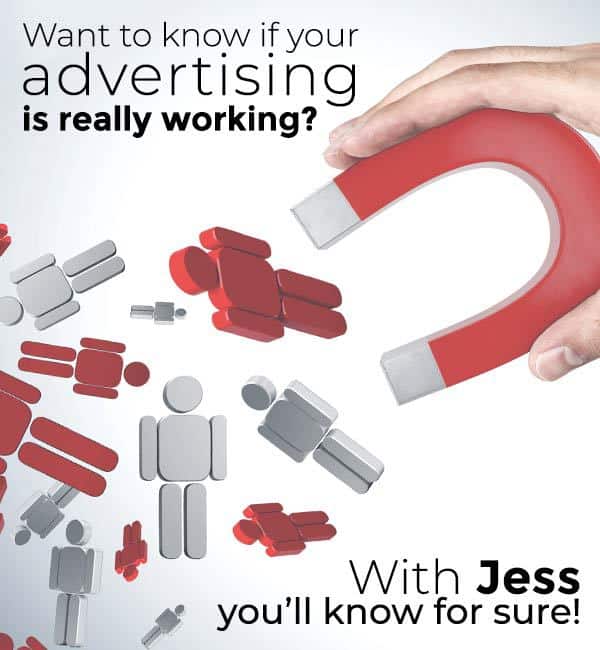How Google’s Pay Per Click System Works
You define how much you are willing to pay Google by setting a maximum bid for a click or a conversion, which is an action a user takes on your site. For example, you might be willing to pay $1.00 for a click to your website. When someone does a search and uses one of the keyword phrases you are interested in showing up for, you compete against all other advertisers who also want to show for similar keywords.
How high you show up in the paid search results depends on how much you bid and your Quality Score, which Google calculates by looking at what percentage of the time your ads are clicked on, how well your campaign is set up, and how relevant the web page you want to send people to is. Google calculates the product of your bid and quality score (Bid x Qualify Score) to determine your Ad Rank, which is the number that defines the placement of your ad. If your ad is clicked on 2.01% of the time, you can pay half of what someone pays if their click through rate is 1%, which is why setting up your campaign correctly is important. It’s also important to note you don’t actually pay as much as your bid. You only pay $.01 more than the bid below you.
Keep in mind you won’t get any clicks if you bid too little. Even if your campaign is set up perfectly, your bids need to compete with what rest of the market is willing to pay. How much you need to pay per interaction varies greatly depending on your keywords. However, as an example, you aren’t going to be able to get clicks for $.10 if a dozen competitors are willing to pay $1 for the same click.
Google Ads can be cancelled with no notice. Google Ads are low risk, because there are no long-term contracts. You can turn off spending instantly if you decide Google Ads are no longer for you.
Why You Should Never Let Staff Set Up Your Google Ads
Google Ads are easy to set up, but difficult to set up correctly. Google makes it easy for anyone to get started with Google Ads, but it’s almost impossible for someone inexperienced to get everything right. Because there is so much that can go wrong, I strongly believe if you can’t afford getting professional help setting up Google Ads, you can’t afford to use Google Ads. It’s very easy to make costly mistakes. Two examples of newbie errors are targeting broad keywords without setting location targeting, e.g. using “dentist” as a keyword but not setting the location range around your practice, and bidding too high on keywords, for example, bidding $5 per click with a $10 per day budget when there are opportunities to bid $2 and get 5 clicks, rather than just 2. It’s also challenging to set up the tracking that lets you know if people are calling you or filling out contact forms as a result of your ads. Without this data, it’s impossible to know if Google search ads are working for you.
Getting Google Ads to work requires experimentation. Even top tier experts need a little bit of time to experiment and calibrate a Google search campaign. While Google Ad’s don’t work for everyone, you are much more likely to get them to work when in the hands of someone who knows what she is doing. However, you should expect to “waste” a little money while you are figuring out what works.
An intern with the Google Ads certification should not set up your Google Ads. If you have someone who is very experienced with Google Ads, you are the exception to the rule, and by all means, set up Google Ads in house. But take it from me, while studying for the Google Ads certification is useful, it takes experience to know how to run an account successfully. During his summer internship, my son passed the two tests required to become Google Ads certified in three weeks. I love him, but I wouldn’t want him running your Google Ads campaign. Enough said.
SEO v. Google Ads
While SEO is still a great marketing tactic because it usually offers the highest return on investment for many businesses, there are cases when you might want to take a look at investing in Google Ads first. For example, if you have a new business, by definition, you have a new website. Google favors websites that have been around awhile, not to mention older websites generally have more content than new websites. You should expect it to take some time for new websites to show up in the free/organic search engine results. If you want to start generating leads from your website right away, you can use Google search ads.
Established businesses with great SEO can also benefit from Google ads. If you have the capacity to do more business, you can generate additional leads using Google Ads. Assuming your advertising cost is less than your gross profit, you will increase your bottom line.
The Best Results are Possible When You Know What You Can Afford to Acquire a New Customer
I get asked all the time to suggest a starting Google Ads budget. I always advise clients to start out small, and then ramp up as they learn what works. Ideally, you should figure out how much you are comfortable spending to acquire a new customer and make an assumption about how many leads you will need to close a sale. This will help you know how much you can afford to pay for a lead, which can help inform about how much you can afford to bid for a click. For example, if your average sale is $5000 and you have a high profit margin, you might be able to afford $1000 to acquire this customer. Assuming you expect 1 in 5 leads close, you can afford $200 per lead. If you expect a 2% conversions rate, you will need 50 clicks to generate a lead, and therefore, you can afford to pay no more than $4 per click. As long as all of your assumptions hold, you should will be able to justify your Google Ads spending.
You Made It to the End!
Congratulations for making it to the end of a very long introduction to Google Ads. As much as I’ve tried to simplify things, I’m sure you still have questions. Please feel free to ask them in the comments below, and I’ll answer as soon as I can.
Don’t miss out on our next tutorial! Please subscribe to our marketing newsletter.
*Alphabet is Google’s parent company.



0 Comments